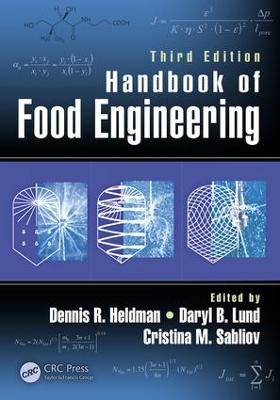
Handbook of Food Engineering
Seiten
2019
|
3rd edition
Crc Press Inc (Verlag)
978-1-4665-6312-4 (ISBN)
Crc Press Inc (Verlag)
978-1-4665-6312-4 (ISBN)
The primary mission of the third edition of Handbook of Food Engineering is to provide the information needed for efficient design and development of processes used in the manufacturing of food products, along with supplying the traditional background on these processes.
As the complexity of the food supply system increases, the focus on processes used to convert raw food materials and ingredients into consumer food products becomes more important. The Handbook of Food Engineering, Third Edition, continues to provide students and food engineering professionals with the latest information needed to improve the efficiency of the food supply system.
As with the previous editions, this book contains the latest information on the thermophysical properties of foods and kinetic constants needed to estimate changes in key components of foods during manufacturing and distribution. Illustrations are used to demonstrate the applications of the information to process design. Researchers should be able to use the information to pursue new directions in process development and design, and to identify future directions for research on the physical properties of foods and kinetics of changes in the food throughout the supply system.
Features
Covers basic concepts of transport and storage of liquids and solids, heating and cooling of foods, and food ingredients
New chapter covers nanoscale science in food systems
Includes chapters on mass transfer in foods and membrane processes for liquid concentration and other applications
Discusses specific unit operations on freezing, concentration, dehydration, thermal processing, and extrusion
The first four chapters of the Third Edition focus primarily on the properties of foods and food ingredients with a new chapter on nanoscale applications in foods. Each of the eleven chapters that follow has a focus on one of the more traditional unit operations used throughout the food supply system. Major revisions and/or updates have been incorporated into chapters on heating and cooling processes, membrane processes, extrusion processes, and cleaning operations.
As the complexity of the food supply system increases, the focus on processes used to convert raw food materials and ingredients into consumer food products becomes more important. The Handbook of Food Engineering, Third Edition, continues to provide students and food engineering professionals with the latest information needed to improve the efficiency of the food supply system.
As with the previous editions, this book contains the latest information on the thermophysical properties of foods and kinetic constants needed to estimate changes in key components of foods during manufacturing and distribution. Illustrations are used to demonstrate the applications of the information to process design. Researchers should be able to use the information to pursue new directions in process development and design, and to identify future directions for research on the physical properties of foods and kinetics of changes in the food throughout the supply system.
Features
Covers basic concepts of transport and storage of liquids and solids, heating and cooling of foods, and food ingredients
New chapter covers nanoscale science in food systems
Includes chapters on mass transfer in foods and membrane processes for liquid concentration and other applications
Discusses specific unit operations on freezing, concentration, dehydration, thermal processing, and extrusion
The first four chapters of the Third Edition focus primarily on the properties of foods and food ingredients with a new chapter on nanoscale applications in foods. Each of the eleven chapters that follow has a focus on one of the more traditional unit operations used throughout the food supply system. Major revisions and/or updates have been incorporated into chapters on heating and cooling processes, membrane processes, extrusion processes, and cleaning operations.
Dennis R. Heldman, Daryl B. Lund, Cristina Sabliov
Rheological Properties of Foods. Nano-scale Science in Food Systems. Reaction Kinetics in Food Systems. Phases Transitions and Transformations in Food Systems. Transport and Storage of Food Products. Heating and Cooling Processes for Foods. Food Freezing and Frozen Food Storage. Mass Transfer in Foods. Evaporation and Freeze Concentration. Membrane Processes for Foods. Food Dehydration. Thermal Processing of Canned Foods. Extrusion Processes. Food Packaging. Cleaning and Sanitation.
| Erscheint lt. Verlag | 13.2.2019 |
|---|---|
| Zusatzinfo | 149 Tables, black and white; 26 Line drawings, color; 456 Line drawings, black and white; 16 Halftones, color; 26 Halftones, black and white |
| Verlagsort | Bosa Roca |
| Sprache | englisch |
| Maße | 178 x 254 mm |
| Gewicht | 2332 g |
| Themenwelt | Technik ► Lebensmitteltechnologie |
| ISBN-10 | 1-4665-6312-5 / 1466563125 |
| ISBN-13 | 978-1-4665-6312-4 / 9781466563124 |
| Zustand | Neuware |
| Haben Sie eine Frage zum Produkt? |
Mehr entdecken
aus dem Bereich
aus dem Bereich
Technologie, Chemie, Mikrobiologie, Analytik, Bedeutung, Recht
Buch | Hardcover (2023)
Verlag Eugen Ulmer
140,00 €


